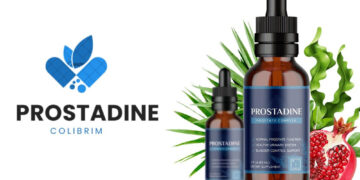Botox has become a household name, synonymous with smoothing wrinkles and turning back the clock. Once a treatment whispered about in celebrity circles, it’s now a mainstream cosmetic procedure embraced by people from all walks of life. Its popularity stems from a simple promise: to reduce the appearance of fine lines and restore a more youthful, rested look.
But with so much information—and misinformation—out there, it can be difficult to determine if Botox is the right choice for your personal aesthetic goals. This post will offer a clear-eyed view of what Botox is, how it works, who it’s best suited for, and what you can realistically expect from the treatment. By understanding the full picture, you can make an informed decision about whether to incorporate it into your skincare and anti-aging regimen.
What Exactly Is Botox?
Botox is a brand name for a purified protein derived from Botulinum toxin type A. While the word “toxin” might sound alarming, it has been used safely in medical and cosmetic applications for decades. In a controlled, clinical setting like The Medical Skin Clinic, it is administered in tiny, precise doses to achieve a desired aesthetic effect.
Its primary function in cosmetic medicine is to temporarily relax the muscles responsible for creating dynamic wrinkles—the lines that form from repeated facial expressions like smiling, frowning, or squinting. By preventing these muscles from contracting, Botox softens existing lines and can even help prevent new ones from forming.
Who Is the Ideal Candidate for Botox?
Botox isn’t a one-size-fits-all solution. The ideal candidate is someone who is looking to address specific cosmetic concerns and has realistic expectations about the outcome. Here’s a closer look at who can benefit most from this treatment.
You Want to Soften Dynamic Wrinkles
Are you bothered by the “11s” between your brows, the horizontal lines across your forehead, or the crow’s feet at the corners of your eyes? These are classic examples of dynamic wrinkles, and they are the primary target for Botox. If these lines are your main concern, you are likely an excellent candidate. The treatment is highly effective at smoothing these areas, resulting in a more refreshed and less tired appearance.
You’re Looking for Prevention, Not Just Correction
It’s a common misconception that you should wait until wrinkles are deep-set before considering Botox. In reality, many younger individuals in their late 20s and early 30s are now using it as a preventative measure. By relaxing the muscles that cause wrinkles before they become permanently etched into the skin, you can effectively delay the signs of aging. This approach, often called “preventative Botox,” helps maintain smoother skin for longer.
You Understand It’s Not a Permanent Fix
One of the most important things to understand about Botox is that its effects are temporary. Results typically last between three to four months. After this period, muscle activity gradually returns, and wrinkles will reappear. Ideal candidates are prepared for the commitment of regular maintenance treatments to preserve their results. This ongoing cycle is a key consideration when deciding if Botox fits your lifestyle and budget.
You Have Realistic Expectations
Botox delivers noticeable, yet subtle, results. It can make you look well-rested and rejuvenated, but it won’t fundamentally change your appearance or make you look like a different person. An experienced practitioner at The Medical Skin Clinic will aim for a natural look, ensuring you can still express emotions. Candidates who understand that the goal is enhancement, not transformation, are generally the most satisfied with their results.
Who Should Reconsider or Avoid Botox?
While Botox is safe for many, it’s not suitable for everyone. Certain individuals should exercise caution or explore alternative treatments.
Pregnant or Breastfeeding Individuals
There is limited research on the effects of Botox on a developing fetus or a nursing infant. To err on the side of caution, medical professionals advise against receiving Botox injections while pregnant or breastfeeding.
Individuals with Certain Neuromuscular Disorders
People with conditions like myasthenia gravis, Eaton-Lambert syndrome, or ALS should avoid Botox. These disorders already affect nerve and muscle function, and the muscle-relaxing properties of Botox could exacerbate their symptoms.
Those with Static Wrinkles or Volume Loss
Botox is designed for dynamic wrinkles caused by muscle movement. It does not address static wrinkles—lines that are present even when your face is at rest—or concerns related to volume loss, such as hollowed cheeks. These issues are better treated with other procedures, such as dermal fillers, which restore volume and plump the skin from within. A consultation at The Medical Skin Clinic can help determine the right treatment for your specific concerns.
Your Next Steps
Botox has become one of the most trusted and effective treatments for those seeking to refresh their appearance without surgery. When administered by skilled medical professionals, it smooths fine lines, softens expression lines, and delivers natural-looking results that enhance confidence. If you believe you may be a good candidate, scheduling a consultation allows you to discuss your goals and explore a treatment plan tailored specifically to your needs.
A one-on-one consultation allows you to discuss your aesthetic desires, ask questions, and receive a personalized treatment plan tailored to your unique facial anatomy. At The Medical Skin Clinic, our team of experienced practitioners is dedicated to providing safe, effective, and natural-looking results. We can help you navigate your options and determine if Botox is the best path to achieving the refreshed, confident look you desire.













